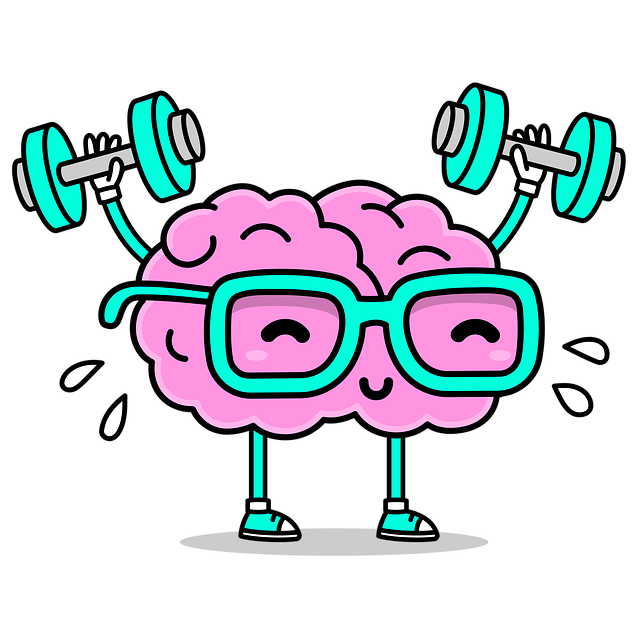Reducing Mental Illness Stigma: Strategies from Broomfield Bipolar Disorder Therapy
The text highlights the detrimental impact of stigma on individuals with bipolar disorder, leading t…….
In the intricate landscape of mental health care, Broomfield Bipolar Disorder Therapy (BBDT) has emerged as a transformative approach, offering hope and healing to individuals grappling with bipolar disorder. This article delves into the multifaceted world of BBDT, exploring its origins, impact, and the global journey it has undertaken. By examining its various facets, we aim to provide valuable insights for professionals, researchers, and policymakers alike, ultimately contributing to improved access and effectiveness in treating this complex mental health condition.
Definition:
Broomfield Bipolar Disorder Therapy is a specialized form of cognitive-behavioral therapy (CBT) tailored to individuals with bipolar disorder. It focuses on identifying and modifying negative thought patterns, behaviors, and emotional responses associated with this illness. The therapy aims to stabilize mood swings, improve coping strategies, and enhance overall quality of life.
Core Components:
Education and Awareness: BBDT begins with educating patients about bipolar disorder, its causes, symptoms, and treatment options. Understanding the condition empowers individuals to actively participate in their recovery.
Mood Monitoring: Patients are taught to track their moods, energy levels, and sleep patterns using daily journals or mobile apps. This self-monitoring helps identify triggers and recognize early signs of mood episodes.
Cognitive Restructuring: Therapists guide patients in identifying and challenging negative thought patterns and beliefs. By replacing distorted thoughts with more realistic and balanced ones, individuals can improve their overall outlook and emotional resilience.
Behavioral Activation: This component encourages patients to engage in meaningful activities, even during depressive episodes. By scheduling pleasurable activities and social interactions, BBDT promotes a sense of purpose and improves mood regulation.
Stress Management: Learning relaxation techniques, such as deep breathing, meditation, or yoga, enables individuals to cope with stress effectively, reducing the likelihood of manic or depressive episodes.
Historical Context:
The roots of CBT can be traced back to the mid-20th century when psychoanalysts and behaviorists began collaborating to develop more evidence-based therapeutic approaches. In the 1960s, Aaron T. Beck pioneered cognitive therapy, which later evolved into CBT. Over time, various therapists and researchers refined CBT techniques, leading to its successful application in treating bipolar disorder in the late 20th century.
Broomfield Bipolar Disorder Therapy has transcended geographical boundaries, making a significant impact worldwide. Its global reach is evident in several key trends:
Increased Awareness: Growing awareness campaigns have elevated the visibility of bipolar disorder and BBDT, encouraging individuals to seek professional help. This trend is particularly noticeable in regions with robust mental health advocacy groups.
Regional Adoption: Different countries have embraced BBDT at varying rates. For instance, North America and Western Europe have been early adopters, while Asia and parts of Latin America are witnessing a gradual increase in its implementation.
Cultural Adaptation: As BBDT spreads globally, therapists and researchers are adapting the therapy to suit diverse cultural contexts. Cultural sensitivity ensures that the treatment aligns with local beliefs and values, enhancing its effectiveness.
Telehealth Integration: The digital age has facilitated the integration of BBDT into telehealth services, making therapy more accessible, especially in rural or under-resourced areas. Online platforms allow individuals to receive specialized care from the comfort of their homes.
The economic implications of Broomfield Bipolar Disorder Therapy are significant, both for healthcare systems and individuals. Here’s an overview:
| Economic Aspect | Description |
|---|---|
| Market Size | The global mental health market is projected to reach USD 435 billion by 2026, with a substantial portion dedicated to bipolar disorder treatment. |
| Cost-Effectiveness | Research suggests that BBDT can lead to cost savings in the long term by reducing hospital admissions and medication costs associated with poorly managed bipolar disorder. |
| Investment Patterns | Private equity firms and venture capitalists have shown interest in mental health tech, including platforms offering CBT-based therapies like BBDT, indicating growing investment opportunities. |
| Employer Support | Many organizations are recognizing the benefits of offering employee assistance programs (EAPs) with integrated BBDT, promoting workplace well-being and productivity. |
Technology has played a pivotal role in enhancing and expanding Broomfield Bipolar Disorder Therapy:
Mobile Apps: Various apps designed for mood tracking, meditation, and cognitive exercises complement traditional therapy. These tools provide patients with convenient access to coping strategies between sessions.
Virtual Reality (VR) Therapy: VR is being explored as a novel way to expose patients to simulated environments, helping them practice coping skills in safe, controlled settings. This technology shows promise in treating fear and anxiety associated with bipolar disorder.
Artificial Intelligence (AI): AI algorithms can analyze vast amounts of patient data to predict mood episodes, personalize treatment plans, and provide real-time feedback, potentially improving therapy outcomes.
Online Therapy Platforms: Telehealth platforms offer BBDT sessions via video conferencing, making therapy accessible to individuals in remote areas or those with limited mobility.
The development and implementation of BBDT are guided by various policies and regulations that vary across regions:
Health Insurance Coverage: In many countries, health insurance plans now include coverage for evidence-based mental health treatments, including CBT-based therapies. This ensures better access for patients.
Regulatory Approval: Medications used in conjunction with BBDT are subject to stringent regulatory processes to ensure their safety and efficacy. For instance, the FDA in the US regulates the prescription and monitoring of mood stabilizers and antipsychotic drugs.
Research Funding: Governments and private foundations invest in bipolar disorder research, fostering advancements in therapy development and understanding the illness. These investments drive innovation in BBDT.
Mental Health Legislation: Laws promoting mental health awareness, patient rights, and discrimination protection create a supportive environment for BBDT and other evidence-based practices.
Despite its proven effectiveness, BBDT faces several challenges and criticisms that require strategic solutions:
Stigma and Misunderstanding: Bipolar disorder often carries a stigma, leading to underreporting and late diagnosis. Educating the public and healthcare professionals about the illness is crucial for improving access to BBDT.
Limited Healthcare Resources: In many regions, especially low-income areas, there is a shortage of specialized mental health professionals trained in CBT. Increasing access to training and incentives for therapists can address this issue.
Cost and Insurance Barriers: Despite cost-effectiveness, out-of-pocket expenses and insurance coverage limitations may deter individuals from seeking BBDT. Policy interventions to expand coverage and reduce financial barriers are essential.
Individualized Treatment: Bipolar disorder manifests differently in each person, necessitating tailored treatment plans. Therapists must be adept at tailoring BBDT to meet unique patient needs.
Case Study 1: Sarah’s Journey to Stability
Sarah, a 32-year-old marketing professional, was diagnosed with bipolar II disorder after experiencing several manic episodes and depressive periods that significantly impacted her work and relationships. She enrolled in an 8-week BBDT program, where she learned mood monitoring techniques and cognitive restructuring strategies. With consistent practice, Sarah successfully managed her symptoms, improved her sleep, and maintained a stable mood for the first time in years. Her experience led her to become an advocate for mental health awareness in her community.
Case Study 2: Adolescent Recovery with BBDT
A 16-year-old adolescent, Jamie, struggled with rapid-cycling bipolar disorder, often leading to school absences and conflicts with family. Referred to a specialized clinic, Jamie participated in a family-inclusive BBDT program. The therapy focused on educating the family about bipolar disorder, improving communication, and teaching Jamie coping skills. Over several months, Jamie’s mood episodes became less frequent and intense, allowing him to return to school and rebuild relationships with his parents.
The future of Broomfield Bipolar Disorder Therapy holds immense potential for growth and innovation:
Personalized Medicine: Advancements in genomics and neuroscience may enable more precise identification of biological markers associated with bipolar disorder, leading to personalized treatment approaches.
Digital Therapeutic Interventions: The integration of AI, machine learning, and data analytics will likely result in highly tailored digital therapy platforms, providing continuous support between sessions.
Global Collaboration: International partnerships can facilitate the sharing of best practices, research findings, and resources, ultimately enhancing global access to effective BBDT.
Integration with Other Therapies: Combining BBDT with other evidence-based approaches, such as mindfulness-based therapies or family-focused interventions, may yield even better outcomes for complex cases.
Broomfield Bipolar Disorder Therapy stands as a beacon of hope for individuals navigating the challenges of bipolar disorder. Its global impact, backed by robust research and real-world success stories, underscores its importance in modern mental health care. As we move forward, addressing the remaining challenges through policy reforms, technological advancements, and increased public awareness will ensure that BBDT continues to transform lives worldwide.
Q: How does BBDT differ from other forms of therapy for bipolar disorder?
A: Broomfield Bipolar Disorder Therapy is a specialized CBT approach that focuses on identifying and modifying negative thought patterns specific to bipolar disorder. It differs from other therapies by combining education, mood monitoring, cognitive restructuring, and behavioral activation techniques tailored to the individual’s unique experiences.
Q: Can BBDT be done remotely through telehealth?
A: Yes, many aspects of BBDT can be delivered effectively through telehealth platforms, making therapy accessible to individuals in remote areas or those with limited mobility. However, face-to-face interactions may still be beneficial for complex cases, and therapists should use a combination of methods to ensure optimal care.
Q: Is BBDT suitable for all ages?
A: BBDT is adaptable and can be tailored for different age groups, including children, adolescents, and adults. The therapy’s focus on education, self-monitoring, and skill development makes it suitable for individuals across the lifespan, with adjustments made based on developmental considerations.
Q: How long does it take to see results from BBDT?
A: The duration of BBDT varies depending on the severity of symptoms, adherence to the treatment plan, and individual factors. Some individuals may experience improvements within a few weeks, while others might take several months to stabilize. Consistency in therapy sessions and practice between sessions is crucial for optimal outcomes.

The text highlights the detrimental impact of stigma on individuals with bipolar disorder, leading t…….

Understanding bipolar disorder, a mental health condition marked by extreme mood swings, is key to d…….